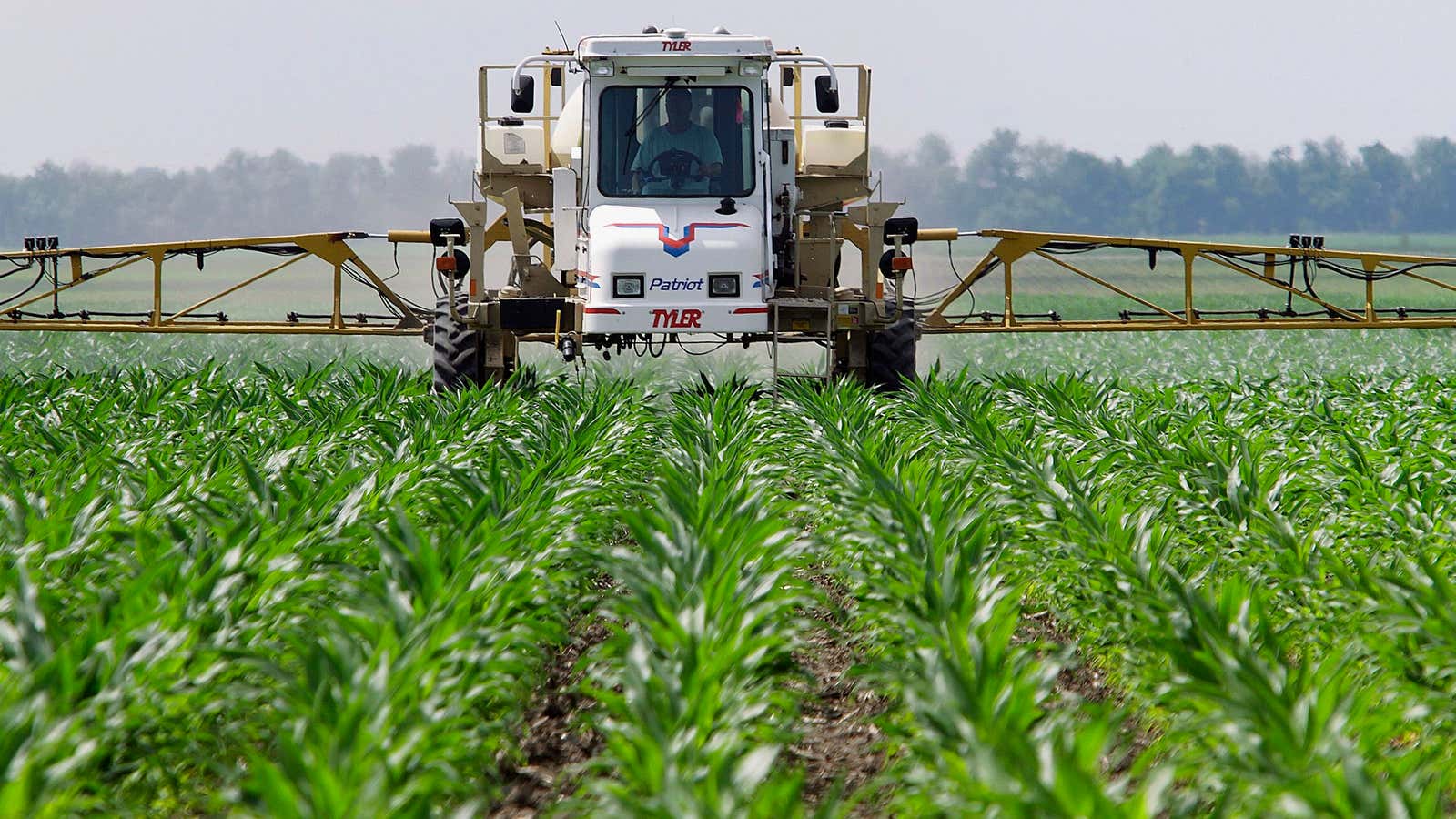This post has been updated with further comment from Monsanto.
Monsanto, the US-based agrochemical giant that has dominated the agricultural industry with its herbicides and genetically modified seeds, is the focus of yet another controversy over the potential hazards of one of its biggest chemicals.
Glyphosate, one of the primary ingredients in Monsanto’s ubiquitous weedkiller Roundup and other companies’ products, probably causes non-Hodgkin lymphoma, according to a new report from the World Health Organization’s International Agency for Research on Cancer (IARC).
The report is based on a review of existing evidence, including multiple studies of the effects of glyphosate on agricultural and forestry workers since 2001, co-author Kate Guyton tells Quartz. She says the report stopped short of saying the chemical conclusively causes cancer, because these existing studies focused on a limited population of healthy male workers; they did not include young people or women. It’s unclear how much exposure would be cancerous, or why glyphosate leads specifically to this kind of cancer, Guyton says.
What the scientists do know is that the people in these studies who were exposed to glyphosate experienced a higher incidence of non-Hodgkin lymphoma than those not exposed to the chemical. Other studies found that glyphosate led to DNA and chromosomal damage in human and animal cells in vitro, which can lead to cancer.
Roundup and other glyphosate-based herbicides accounted for a large portion of Monsanto’s $994 million net sales increase from fiscal year 2013 to 2014, according to Monsanto’s annual report (pdf pg. 29). The weedkiller is sold heavily to farmers, but any American with a garden likely has a bottle of the residential version as well. The IARC report points out that glyphosate is used in 750 products worldwide, and ”use has increased sharply with the development of genetically modified glyphosate-resistant crop varieties.”
Monsanto’s own timeline details Roundup’s rise to dominance in agriculture—the company first started selling herbicides in the mid-20th century to kill weeds, and then developed genetically modified seeds that would resist the effects of the herbicides. That made it easier for farmers to spray large swaths of land, demolishing the weeds but leaving their cash crops intact.
The company put out a statement refuting the conclusion drawn by the IARC, arguing that it did not account for other relevant scientific data and that the chemical has been permitted by regulators in various countries. Monsanto also noted a lot of other chemicals in IARC’s “probably carcinogenic” classification that people come in frequent contact with, like aloe vera. Monsanto did not provide further comment to Quartz beyond its press release on the issue.
Update: Monsanto told Quartz that the IARC report has not changed its stance on glyphosate’s safety and it will maintain current levels of the chemical in its Roundup products.
